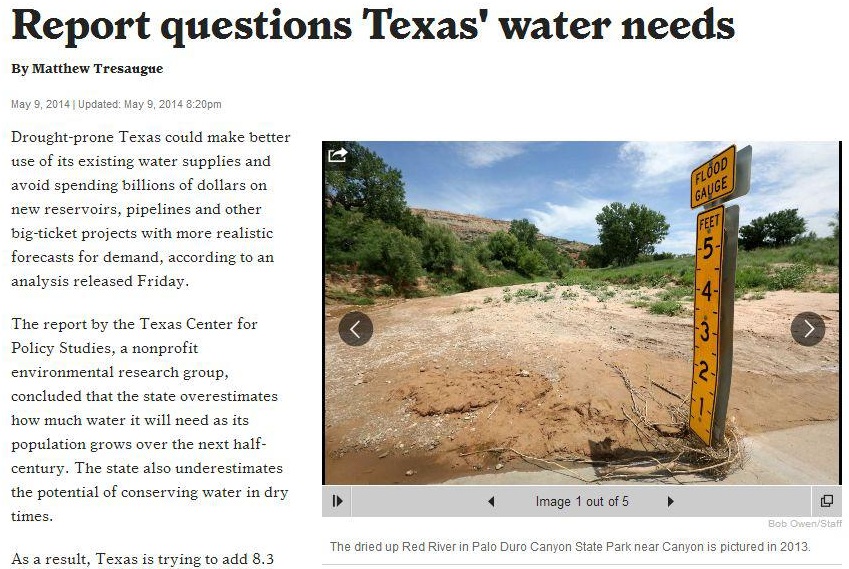Much of southern United States has been locked in a state of drought since 2012. In Texas, where a large portion of the land is arid and dry, state water resources are being stretched thin, and several large reservoirs and lakes are at risk of completely disappearing.
Toward the end of May, several Texas communities reported being at serious risk of being hit hard by the dry season. Thirty-four communities have warned that they may run out of water before the end of summer, with 12 even fearing they have no more than 45 days left before they completely dry out.
To address the problem of state-wide water shortage, policies have been put into place to curb water usage. As a result, thermal power plants in the state now use less water to produce electricity in exchange for slightly higher water management costs, and the possibility of diverting water away from other heavy users, such as agribusiness, is being discussed.
Already, trucked water is helping to address some residents’ water shortage problems, but many agree that such actions present nothing more than a Band-Aid solution and won’t be feasible in the long term—from both environmental and financial perspectives. Aquifer water has also been seen as a possible solution, but dangerous methane contamination of groundwater in some areas has raised concern among residents.
The current drought highlights a view that many environmental scientists have held for quite some time: that Western patterns of consumption cannot be sustained and efforts need to put more focus on resource conservation.
In light of that, the city of San Antonio’s efforts to curb water consumption offer one sustainability pattern that can be applied to other cities in the state. In 1991, the Texan city was forced to change its water-use practices after a lawsuit was filed against it, claiming it had sucked so much groundwater from the Edwards Aquifer that eight endangered species were put at even greater risk of extinction.
A large part of San Antonio’s water-conservation success story is owed to the installation of low-flow toilets, faucets, and appliances in homes and businesses across the city. Alongside stringent watering restrictions and a nationally leading wastewater treatment and reuse plan, the use of water-conserving plumbing has helped the city reduce its water use from close to 225 gallons per capita per day in the 1990s to just 127 gallons in 2013.
With the drought highlighting the need to conserve water, it’s high time to update the plumbing in Austin homes and business to use less water. To that end, experienced Austin plumbing companies, like Pure Plumbing Services, can help home and business owners identify areas where they can save water and install the appropriate water-conserving hardware.
(Source: Report questions Texas’ water needs, Houston Chronicle, May 9, 2014)


